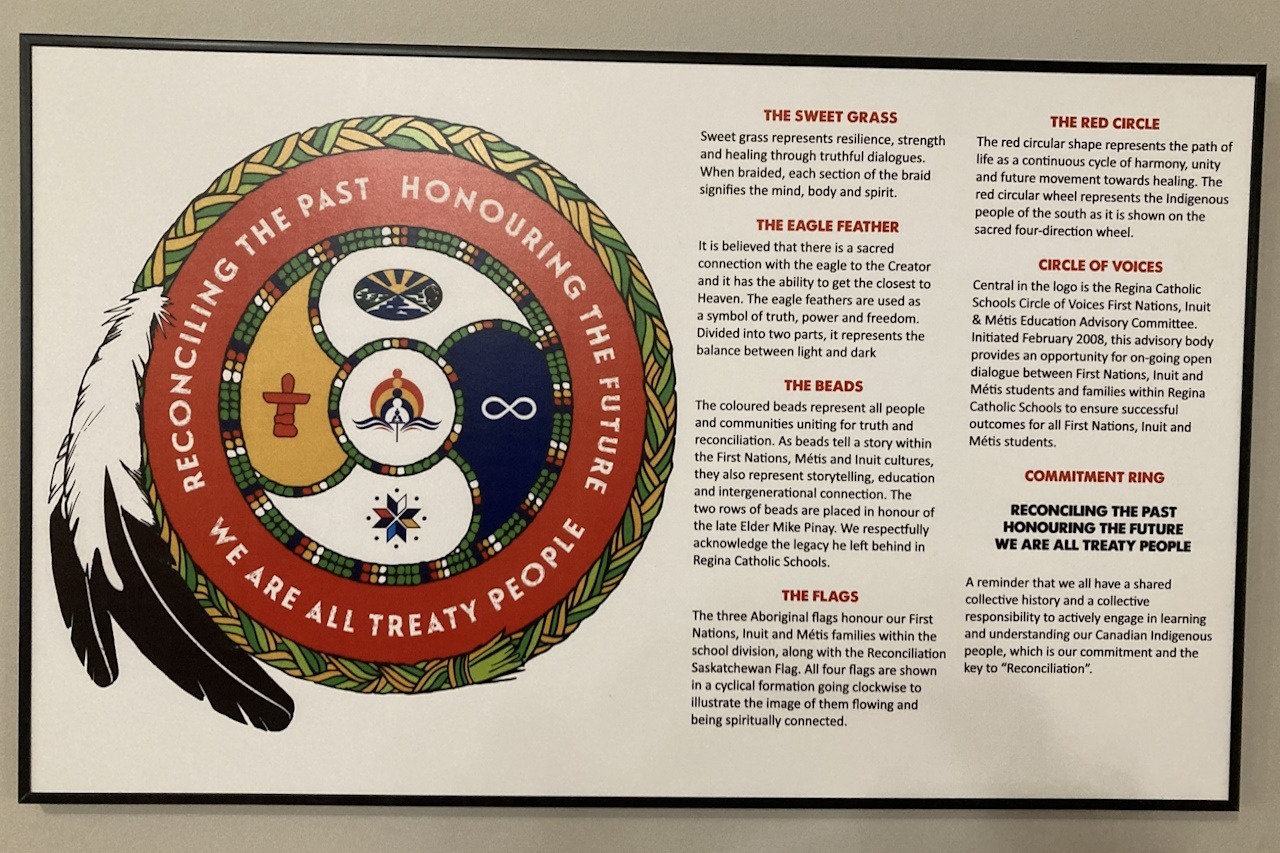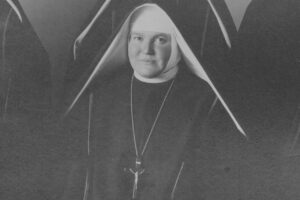In last month’s “history highlight”, (Wednesday August 2), written by Lac Croche parish priest Theophile Campeau OMI, we learned of the festive reception the Sisters received when they arrived at Lac Croche in December 1898.
We now return to Sr. M. de la St Trinité’s history, and her account of the Sisters’ difficult decision to leave Lac Croche.
In September 1899, Reverend Mother, M. Imelda, and her three companions sent for the foundation at Lebret, found that there were people still living in the house destined for them. Waiting for it to be available, they spent a few days at Lac Croche where they were welcomed with inexpressible happiness. One has to live isolated, exposed to all kinds of difficulties, to realize all the intimate sweetness of the “Ecce quam bonum” spontaneously rising in the harsh of these consoling meetings.1
After a week, too rapidly slipping away in the joy of this sisterly reunion, the dear visitors had to answer the call of duty and leave for their own mission, but not without charitably, helping their sisters, by leaving some of their clothing, so that the latter could have something to change each week.
In the interval, a house more spacious and more comfortable had been built at Lac Croche. The community, the little girls, and the boys had apartments properly separated from one another. Miss Lacroix, a relative, of Father Campeau, remained as housekeeper and sole directress of the common kitchen.
After two months at Lebret, Reverend Mother M. Imelda was named superior of the convent at Lac Croche, (Holy Name of Mary), while Mother, Mary St. Irénée replaced her in the new convent of Saint Gabriel. At the latter’s departure from Lac Croche, there was a general meeting where in a farewell and grateful speech, the orator, an Indian chief, proudly exclaimed,
“Remember that no matter where you direct your steps, you will be treading on soil that is ours, we are the only true masters of this land of our ancestors.”
Most of the Indians were still pagans. With their chief ‘Chi Chip’, they adored the sun and, as a symbol of their cult, proudly wore its image painted on the covering thrown over their shoulders. It also decorated the trappings of their horses, and even the roofs and sides of their tents. They loved the Sisters without knowing their language, for the method of organization in this mission did not permit direct relationship with them.
It is necessary to add that the sisters were entirely and cordially devoted to their apostolate. This enterprise was truly worthy of the zeal of the daughters of our venerated Mother Foundress. However, experience proved, each day, more and more, that the kind of administration to which they had to submit, was not consistent with our customs, nor with the way of life in our Congregation. In this Industrial School, the Sisters were to be the employees under the immediate and sole direction of the missionary priests, who acted in the capacity of official agents. They were in absolute control, looking after the finances and arranging everything, so that, in spite of the most sincere goodwill and constant efforts at conciliation, after a prolonged trial of 17 months, it was recognized that, in the designs of God this lot was not to be ours.
On the other hand, Reverend Father Lecocq, OMI, wished to have our sisters in his mission at Ste Rose Du Lac. His grace, the Archbishop, therefore proposed that the Lac Croche community be transferred to Ste. Rose du Lac. After serious examination, and mature reflection, our Reverend mothers at Lyons agreed.
Consequently, in May 1900, Reverend Mother Prioress, Mother M. Imelda, and Sister M. St. Peter Damien went to our convent at Grande Clairière, while their two companions went to Lebret, awaiting the first regular visitation of Reverend Mother M. St. Étienne, assistant, general, who was to organize and direct the project and foundation at Ste. Rose du Lac.
Veronica Dunne is a Sister of our Lady of the Missions (RNDM), who has primarily worked as an educator and counsellor in institutional and community based settings in Canada. She has also served with the RNDMs outside of Canada in Senegal, Peru, and Aotearoa New Zealand.
A 2002 Doctor of Ministry graduate from the University of St. Michael’s College, Toronto School of Theology at the University of Toronto, she subsequently served as director of the Doctor of Ministry program at St. Stephen’s College at the University of Alberta in Edmonton. Her current research interests are in eco-theology and cosmology, and their intersections with indigenous cosmologies and spiritualties.
She presently serves on the RNDM leadership team in Canada.




